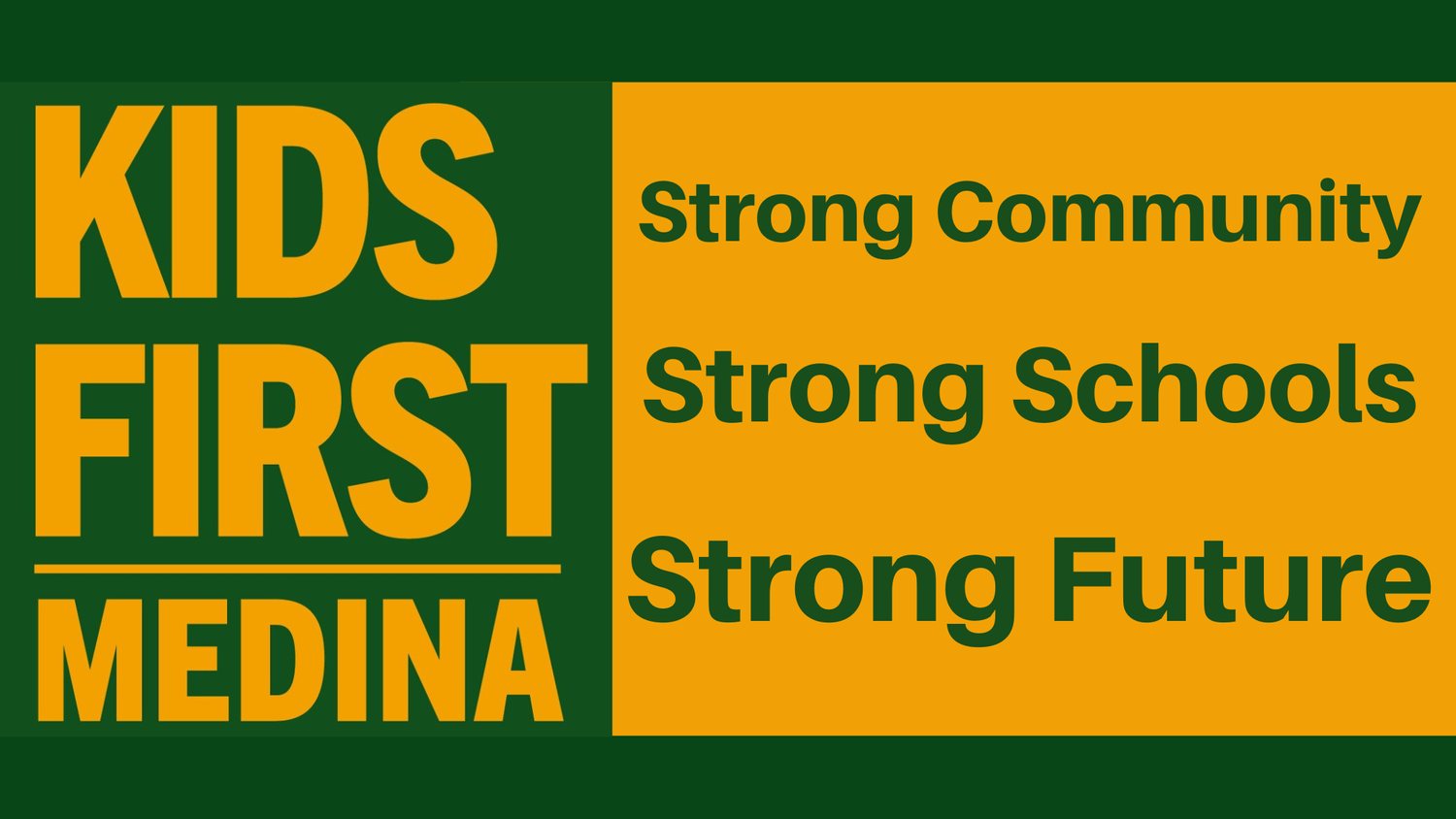About Levies
What is a levy?
A levy is a type of local property tax that is used to fund a specific purpose or project. In the state of Ohio, school districts need levies in order to collect money for specific purposes and projects. There are several types of levies that a district might request.
General Levy
A General Levy is also known as an “operating levy.”
A continuous general levy collects a set amount of money every year without the need for a renewal
An emergency general levy collects a set amount of money for a set amount of time. Most emergency levies are 5-10 years.
The Medina City Schools District requires funds from general levies in order to supplement the cost of day-to-day operations in the district including but not limited to:
Teacher Salaries
Utility Bills
Student Services
Transportation
In 2018 Medina City Schools passed a continuous levy as a replacement for an emergency levy that was passed in 2013. It was not an increase. The last time that the district received new money from taxpayers was in 2013.
Bond Levy
A bond levy is essentially a mortgage for the district. They borrow a set amount of money that is repaid over a set amount of time.
They are used to fund the costs of construction and capital improvements including:
Construction of new facilities
Additions to current facilities
Large scale renovations to existing facilities
Money collected from a bond levy cannot be used toward operating expenses.
Why Does Kids First Medina Support Continuous Levies Over Emergency Levies?
Short-Term Focus over Long-Term Planning
Emergency levies are a response to immediate financial needs, leading to short-term fixes rather than long-term strategic planning.
Medina City Schools made a promise to voters not to ask for more money until it was needed. They spent down the reserves in a proactive long-term plan for the future stability of the District.
An emergency levy is a reactive plan to deal with an immediate financial need. Medina City Schools did not end up here in error. The district is here because of good faith in the community to provide when the need arises.
Inconsistent Funding
Relying on emergency levies introduces inconsistency in funding, making it challenging for schools to implement sustainable programs.
This inconsistency can lead to a lack of stability in educational initiatives, hindering the ability to achieve long-term goals.
For example:
A 5 year emergency levy passes today
The District already knows it will need more money in 5 years
In 5 years, the levy needed now and the levy need in the future are both on the line
A loss would be considerably more catastrophic
Disruption to Educational Programs
Frequent reliance on emergency levies may force schools to make abrupt and disruptive changes to educational programs, impacting the quality and continuity of education for students.
The parents and community members in Medina want more than State minimums
Financial Uncertainty
The need for emergency levies creates financial uncertainty for schools, making it difficult to plan for the future.
The District would be hesitant to invest in long-term projects or improvements due to the unpredictability of the financial situation.
Impact on Teacher and Staff Stability
Instability in funding can affect the stability of the teaching and administrative staff.
High turnover or the constant threat of budget cuts can result in a lack of experienced educators, affecting the overall quality of education.
Limitations on Educational Innovation
Emergency levies limit a school's ability to invest in innovative educational approaches and technologies that can contribute to long-term growth and success.
At the heart of this discussion are two contrasting approaches: emergency levies and continuous levies.
Emergency levies, often a response to immediate financial crises, raise questions about their effectiveness in promoting meaningful oversight. In times of urgency, decisions may be driven by the need for short-term fixes, potentially neglecting comprehensive evaluations of educational programs and outcomes. This reactive stance can lead to a lack of sustained accountability, as the focus shifts to immediate financial concerns rather than the long-term health and growth of our educational institutions.
Moreover, emergency levies can inadvertently foster a culture of pressure-driven scrutiny within the educational community. The threat of program cuts or staff reductions, often associated with financial emergencies, becomes a primary means of monitoring and enforcing accountability. This approach risks stifling collaboration and hindering the pursuit of long-term educational goals, creating an environment that is more reactive than proactive.
On the other hand, consider continuous levies as a model for accountability. By championing stable, consistent funding, continuous levies pave the way for a more strategic and forward-thinking evaluation of educational programs. This stability allows schools to focus on comprehensive oversight, making decisions based on the long-term health of the institution rather than immediate financial crises.
Continuous levies also foster a culture of accountability that is rooted in a commitment to excellence. With a reliable funding base, schools can plan for growth, invest in infrastructure, develop curriculum enhancements, and provide ongoing staff training. This proactive approach ensures that accountability is driven by a dedication to achieving positive student outcomes and sustained success, rather than relying on coercive oversight associated with emergency levies.
In conclusion, the choice between emergency and continuous levies is not just a financial one—it's a choice about the kind of accountability we want in our education system. Do we want a system that reacts to crises with pressure-driven scrutiny, or one that proactively plans for growth and success? Continuous levies offer a path towards sustained excellence, where accountability is a product of stability and commitment to the long-term well-being of our schools.
